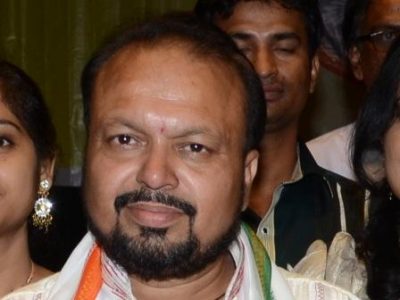Message from the Desk of CEO
Microfinance was developed as an alternative to provide loans to poor people with the goal of creating financial inclusion and equality. Muhammad Yunus, the Nobel Prize winner from Bangladesh, introduced the concept of Microfinance in his country in the form of the “Grameen Bank”. NABARD fell in line with that idea and applied concept of Micro Finance in India. The concept Micro Finance includes financial services such as Saving A/c, Insurance Fund & credit, provided to poor & low income clients so as to help them to raise their income level & improve standard of living.
It may be mentioned that microfinance has already established its success as a poverty reducing measure, but the present challenge is to make the microfinance sustainable and universal. By increasing the scope of microfinance (number of individuals reached), impact (effect on well-being of borrowers), depth (ability to reach the poorest of the poor) and the number of financial products, it can be made available not just to the moderate poor at whom it has traditionally been targeted, but also to the extreme poor and the vulnerable non-poor.
Performance indicators for the FY 2017-18 show that in 29 states and 5 UTs served by the MFIs, loan portfolio has considerably gone up during the last year. Loan portfolio(own) has gone up to Rs. 68789 Crore (including managed portfolio)in 2017-18 against previous year figure Rs. 46842 Crore. Average loan per borrower has also increased to Rs. 14700 from Rs. 12751. Client outreach increased by 19% and loan outstanding has gone up by 47% approx, over previous year. It may also be added that percentage of income generating loan increased to 93% from 85% which indicates that utilization of the loan went up mainly for productive purposes.
Capital Adequacy ratio for all types of micro finance institutions remained above benchmark level of 15% .
Though MFIs are gradually extending their services and increasing client outreach, majority of the population is still dependent on informal and expensive sources, including money lenders to meet their credit needs for various purposes including business loan, working capital loan, home loan etc. Though loan portfolio outstanding in the state of West Bengal increased to Rs. 5029 Crore (2017-18) against previous year outstanding of Rs. 3140 Crore [increase 60%], still there is room for adding other areas for service and Sahara Utsarga Welfare Society has always been exploring the possibilities to bring new clients from new areas into its fold. It has also increased the loan limit from Rs. 15000 to Rs. 20000 for operational convenience of its clientele.
During last few years several unprecedented natural calamities affected the life and the livelihoods of good no. of people and the best phenomenon is the recent flood in Kerala which resulted loss of life about 400 people and more about 600 peoples in other parts of the country. If it is may be observed that most of the people out of the above were economically underprivileged category and clientele of MFIs at different points. Many MFIs came forward to help those people affected in the flood in different ways to overcome their losses and restore normalcy in their life. Sahara Utsarga people always remain at the service of the rural people, particularly its clientele to help them out in any such emergent circumstances.
